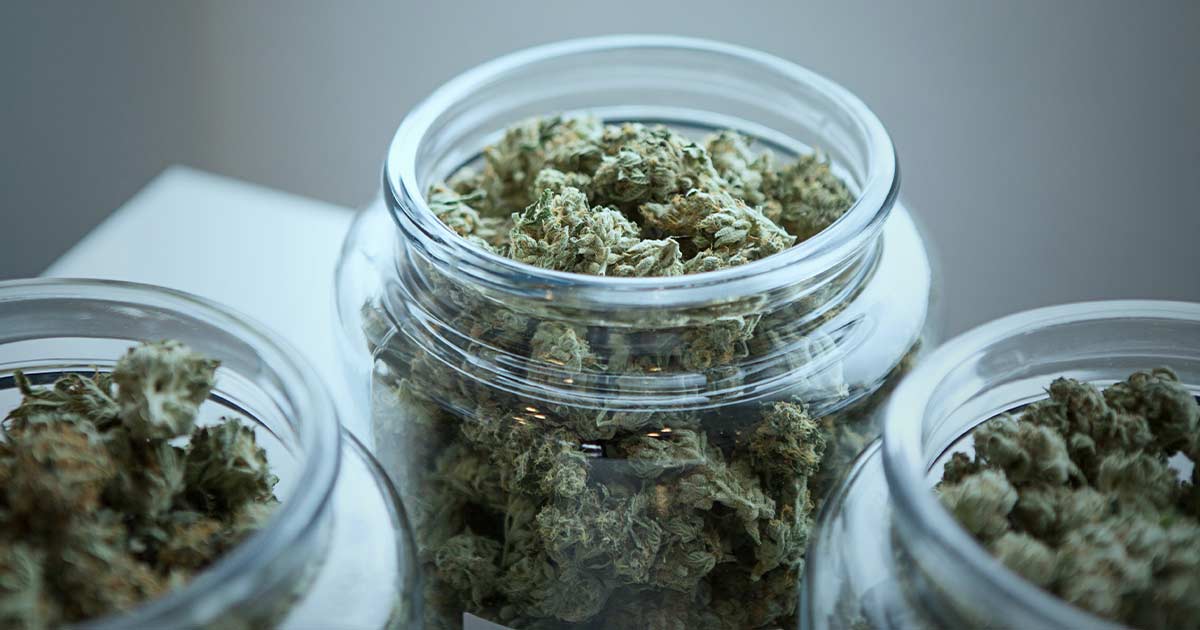Cannabis, scientifically known as cannabis sativa, is a fascinating and complex plant with a rich history and a wide variety of strains and cultivars. Two of the most well-known and widely consumed categories of the cannabis plant are indica and sativa, each with its own unique set of characteristics and effects. But with so many myths and misconceptions surrounding these two species, knowing which one is right for you can be challenging. This article will deeply dive into the differences and similarities between indica and sativa, including their genetics, effects, and potential medical benefits. By the end of this guide, you’ll have a comprehensive understanding of these two popular species and be better equipped to choose the perfect one for your needs. So whether you’re a seasoned cannabis connoisseur or a curious beginner, read on to discover everything you need to know about indica and sativa.
Indica vs Sativa Plants
One of the most apparent differences between indica and sativa is their appearance. Which is actually where their namesakes come from. Indica and sativa are physical descriptions of the cannabis plant, not originally used to describe effects. Over the years though, they have become synonymous with the perceived effect of those different physical plant traits.
Indica plants tend to be shorter and bushier, with broader leaves and denser foliage. They typically grow to around 3-4 feet in height, making them a popular choice for indoor cultivation. On the other hand, Sativa plants generally are taller and more slender, with narrower leaves and less dense foliage. They can grow up to 20 feet in height in ideal outdoor conditions, but they’re less commonly grown indoors due to their size and longer flowering time.
In addition to their physical differences, indica and sativa plants are also grown differently. Indica strains tend to have a shorter flowering time and can be harvested in as little as 8-10 weeks. They also tend to be hardier and more resistant to pests and diseases, making them a popular choice for beginner growers. Instead, sativa has a longer flowering time, typically taking 10-16 weeks to mature. They require more attention and care throughout the growing process, but they can produce higher yields and offer a wider range of aromas and flavors.
All cannabis plants require specific growing conditions to reach their full potential. They both require adequate light, water, and nutrients to thrive, but the specific requirements may vary depending on the strain and the growing method used. Indoor growers may need to adjust their lighting and temperature to simulate ideal outdoor conditions, while outdoor growers need to consider factors like soil quality, sunlight exposure, and temperature fluctuations.

Indica vs. Sativa In Popular Culture
Indica and sativa strains of cannabis have become fixtures in popular culture, often portrayed as having distinct and easily identifiable effects. According to popular belief, indica strains are better suited for relaxation, providing a heavy, sedative body high that can melt away stress and tension. On the other hand, Sativa strains are thought to be more refreshing and stimulating, offering a burst of energy and creativity that can help with focus and productivity.
Marketing Marijuana
It’s a common belief that different cannabis strains have distinct effects on the body and mind. Indicas are said to be more relaxing and sedating, while sativas are believed to be more energizing and uplifting. However, recent research has challenged this notion, suggesting that the effects of cannabis are not so easily categorized.
Researchers from Dalhousie University (Canada) and Wageningen University & Research (The Netherlands) found that the traditional indica and sativa cannabis labeling system does not accurately reflect the chemical composition of different cannabis strains or their effects on the body. The study’s authors argue that the effects of cannabis are primarily due to marketing efforts rather than any inherent differences between indica and sativa strains.
According to the study, cannabis plants can be classified into different chemovars based on their chemical profiles. These profiles are determined by the presence and concentration of various cannabinoids, such as THC and CBD, as well as other compounds like terpenes. However, the study found no consistent correlation between a strain’s chemical profile and its traditional indica/sativa classification.
This suggests that the effects of different cannabis strains are not so much a result of their genetics or chemical composition but rather the result of marketing efforts and consumer expectations. By categorizing strains as either indica or sativa, growers and dispensaries are able to create a sense of differentiation and exclusivity around their products. This can drive demand and justify higher prices, even if little scientific evidence supports the idea that indica and sativa strains have distinct effects.

The Entourage Effect
Cannabis is a complex plant that contains a variety of chemical compounds, including cannabinoids, terpenes, and flavonoids. While cannabinoids like THC and CBD are well-known for their psychoactive and therapeutic effects, terpenes are often overlooked despite playing a critical role in shaping the overall effects of cannabis consumption.
The “Entourage Effect” is a theory that suggests that the various chemical compounds found in cannabis work synergistically to produce a more significant effect than any single compound could achieve alone. Specifically, it refers to the idea that terpenes, which are responsible for the plant’s distinct aroma and flavor, can modify and enhance the effects of other compounds like THC and CBD.
How Terpenes Influence The Effects Of Cannabis
Terpenes are a diverse group of organic compounds that are found in many different plants, not just cannabis. In cannabis, terpenes are produced by the same glands that produce cannabinoids, and they are thought to play a critical role in the plant’s overall effects, including the psychoactive effects.
While more research is needed to fully understand the mechanisms behind the Entourage Effect, evidence suggests that terpenes can influence how cannabinoids interact with the body’s endocannabinoid system. For example, some terpenes are known to have anti-inflammatory or anxiolytic properties, which could potentially enhance the therapeutic effects of CBD.
Common Terpenes Found In Cannabis
There are over 100 different terpenes found in cannabis, each with its unique aroma and potential effects. Some of the most common terpenes found in cannabis include:
Myrcene: Known for its sedative effects, myrcene is found in high concentrations in many indica strains and is possibly one of the largest contributors to the sleepy effect felt when consuming pure indica.
Limonene: As the name suggests, limonene is responsible for the citrusy aroma of many strains. It is believed to have mood-boosting and anti-anxiety effects.
Pinene: Pinene is found in high concentrations in many sativa strains and is known for its energizing effects. It is also believed to have anti-inflammatory and anti-cancer properties.
Caryophyllene: It has a strong spicy aroma and is also common in black pepper, cinnamon, and spices such as oregano, basil, and rosemary. Caryophyllene is the only terpene that binds to CB2 receptors. It is commonly used in topical creams as an anti-inflammatory agent. Besides this, it has shown promise in alcohol addiction rehabilitation.
Terpinolene: Terpinolene has a piney aroma with floral essences. It is also present in high amounts in sage and rosemary. It is commonly used in the manufacture of soaps and perfumes. Some studies have shown that this terpene has depressant effects on the central nervous system. It induces drowsiness and may be used to reduce anxiety and stress
Implications For Cannabis Consumers
By paying attention to the terpene profile of a particular strain, consumers can make more informed decisions about the effects they are likely to experience.
Hybrid Strains
Hybrid cannabis strains are created by crossbreeding different cannabis plants, resulting in a new strain that combines its parent plants’ unique characteristics and effects. Growers can do this breeding process intentionally or naturally through pollination.
How Are hybrid Cannabis Strains Bred?
To breed hybrid cannabis strains, growers typically select two parent plants with desirable traits. These traits may include high potency, specific flavors or aromas, and resistance to pests or diseases. The two parent plants are then crossbred through natural pollination or artificial means, such as hand pollination or cloning.
Once the crossbreeding process is complete, the resulting hybrid cannabis strain will exhibit characteristics from both parent plants. This can include the plant’s physical appearance, such as leaf shape and color, as well as its effects, potency, and terpene profile.
What Are The physical Characteristics Of Hybrid Cannabis Strains?
Hybrid cannabis strains can exhibit a wide range of physical characteristics, depending on the traits of the parent plants. This can include plant height, leaf shape, and flower structure differences. Hybrid cannabis plants may also have a mix of physical features from their parent plants, making them visually unique and interesting.
What Are The Effects Of Consuming Hybrid Cannabis Strains?
The effects of consuming hybrid cannabis strains can vary widely, depending on the specific strain and the traits of its parent plants. However, in general, hybrid strains are known to provide a balance between the effects of indica and sativa strains.
Indica-dominant hybrid strains are known for their relaxing and calming effects. These strains can be helpful in reducing anxiety, promoting sleep, and relieving pain or muscle tension. Sativa-dominant hybrid strains, however, are known for their uplifting and energizing effects. These strains can be useful for enhancing creativity, improving focus, and boosting mood.
Hybrid strains that are evenly balanced between indica and sativa are also available. These strains provide a mix of relaxing and energizing effects, making them a good choice for those who want to experience the benefits of both types of cannabis.
Conclusion
In conclusion, the differences between Indica and Sativa cannabis strains are not as clear cut as once believed. While Indica strains are thought to be more relaxing and Sativa strains more invigorating, the effects of each strain can vary greatly depending on a range of factors, including genetics, terpene content, and individual physiology. The marketing of cannabis products using these labels has contributed to a widespread understanding that may not be entirely accurate.
Ultimately, choosing the right cannabis strain for your needs will depend on various factors, including desired effects, individual physiology, and personal preferences. With a better understanding of the differences between Indica and Sativa strains and the potential impact of terpenes and hybridization, consumers can make more informed decisions when choosing the right cannabis products for their needs.
- Delaware’s Recreational Cannabis Market Finally Set to Launch After Years of Challenges
- Excise Tax Increase to 19% and Its Impact on California Retailers
- Nebraska’s Governor Approves Emergency Medical Cannabis Regulations
- We Must Advocate for Fair and Accurate Marijuana Impairment Testing Policies
- The Global Roots of Plant Medicine: Why Cannabis Has Always Been Part of the Plan
- Hawaii’s HB 302 Becomes Law After Governor’s Unexpected Reversal














